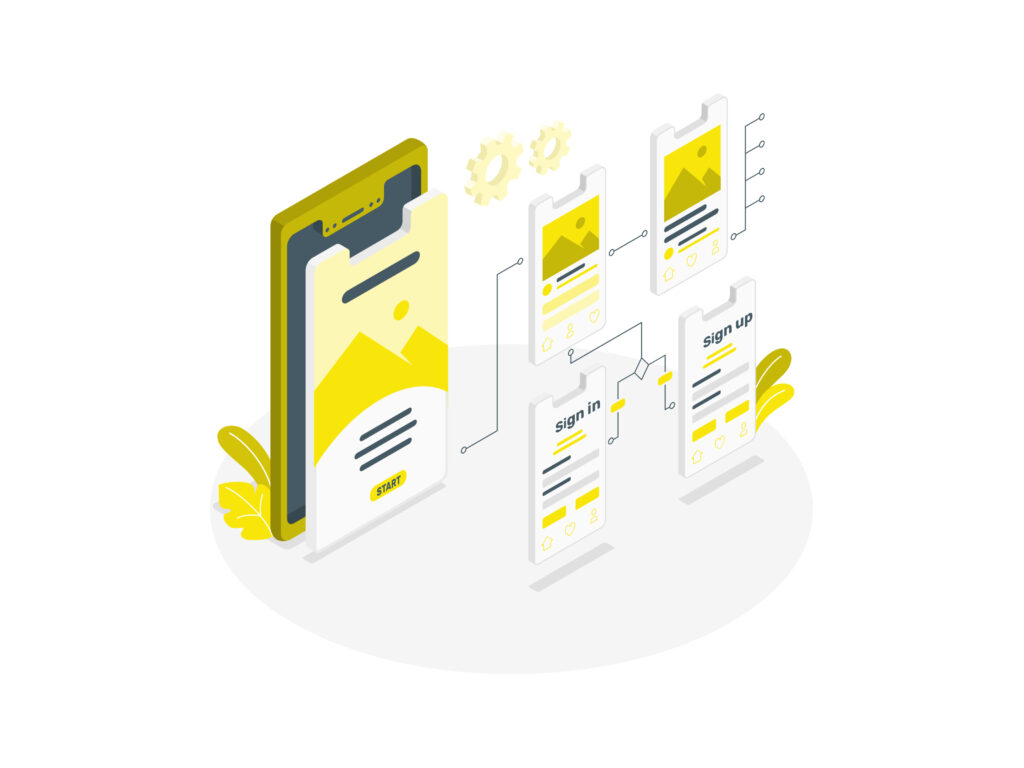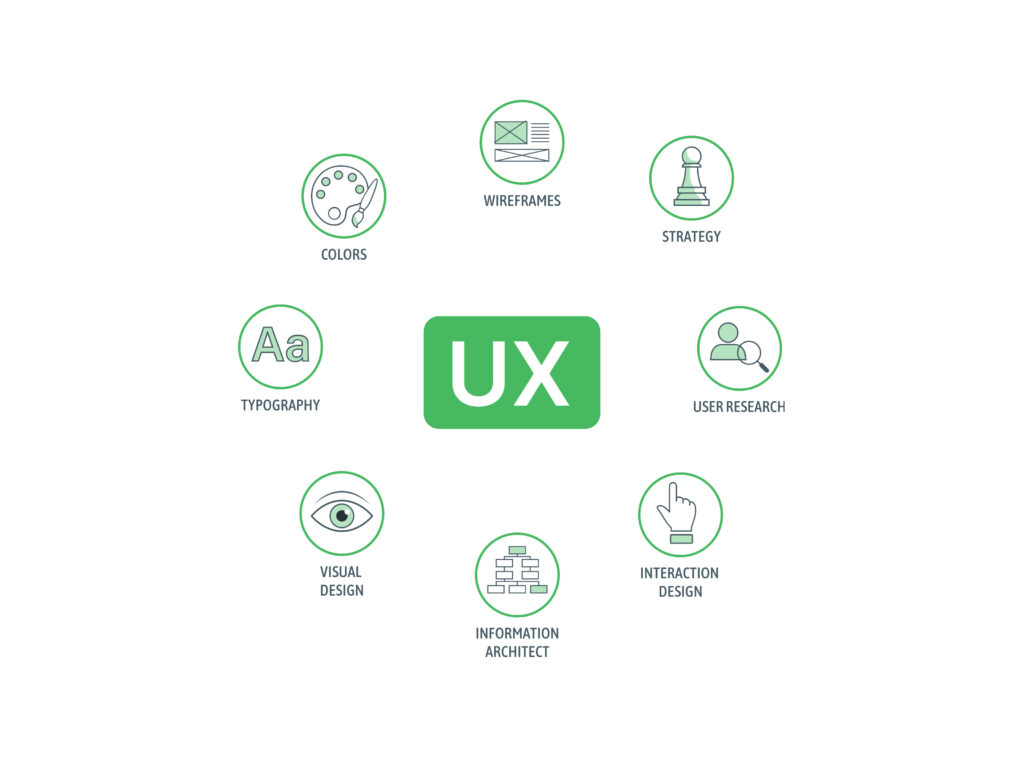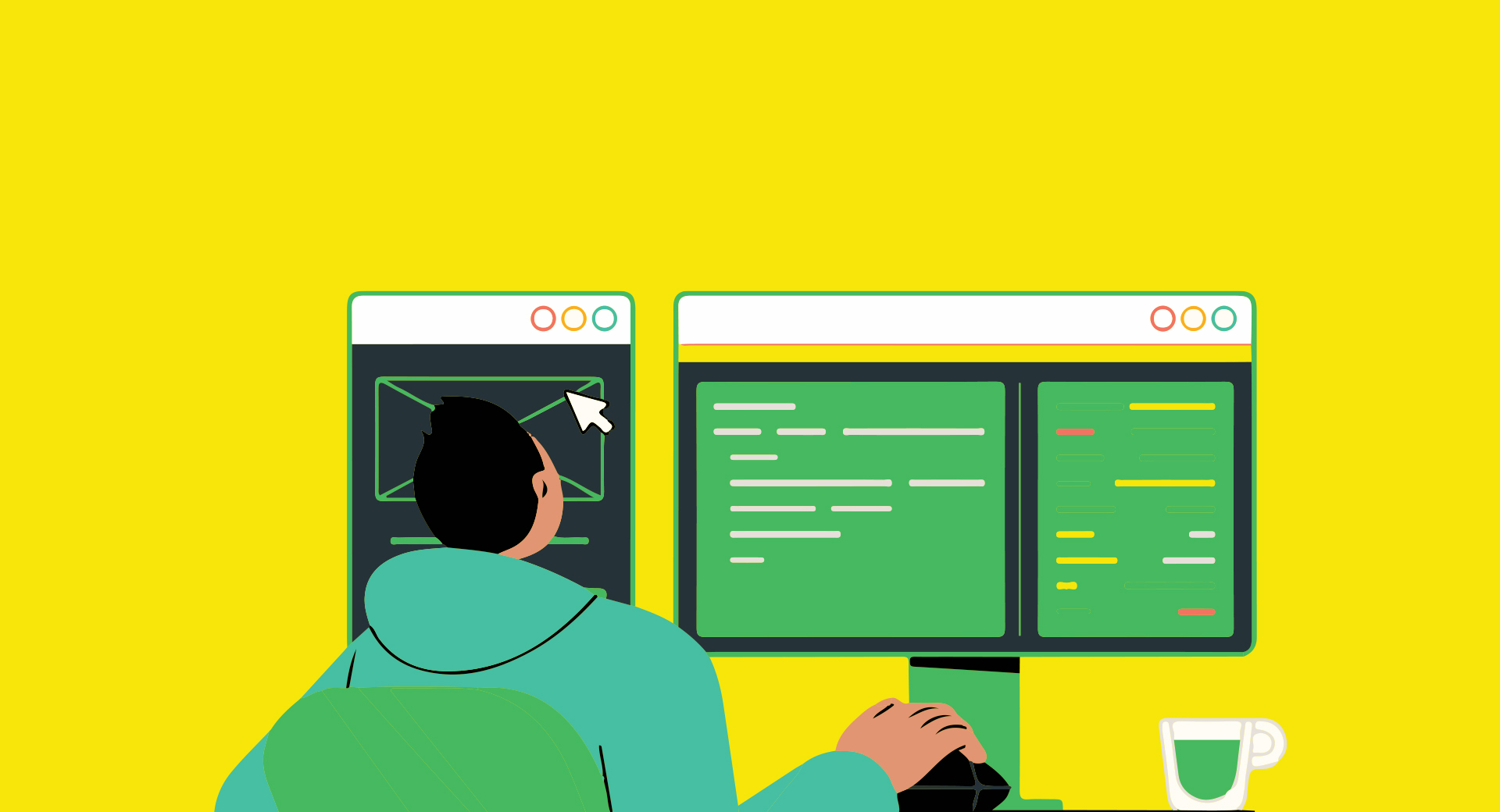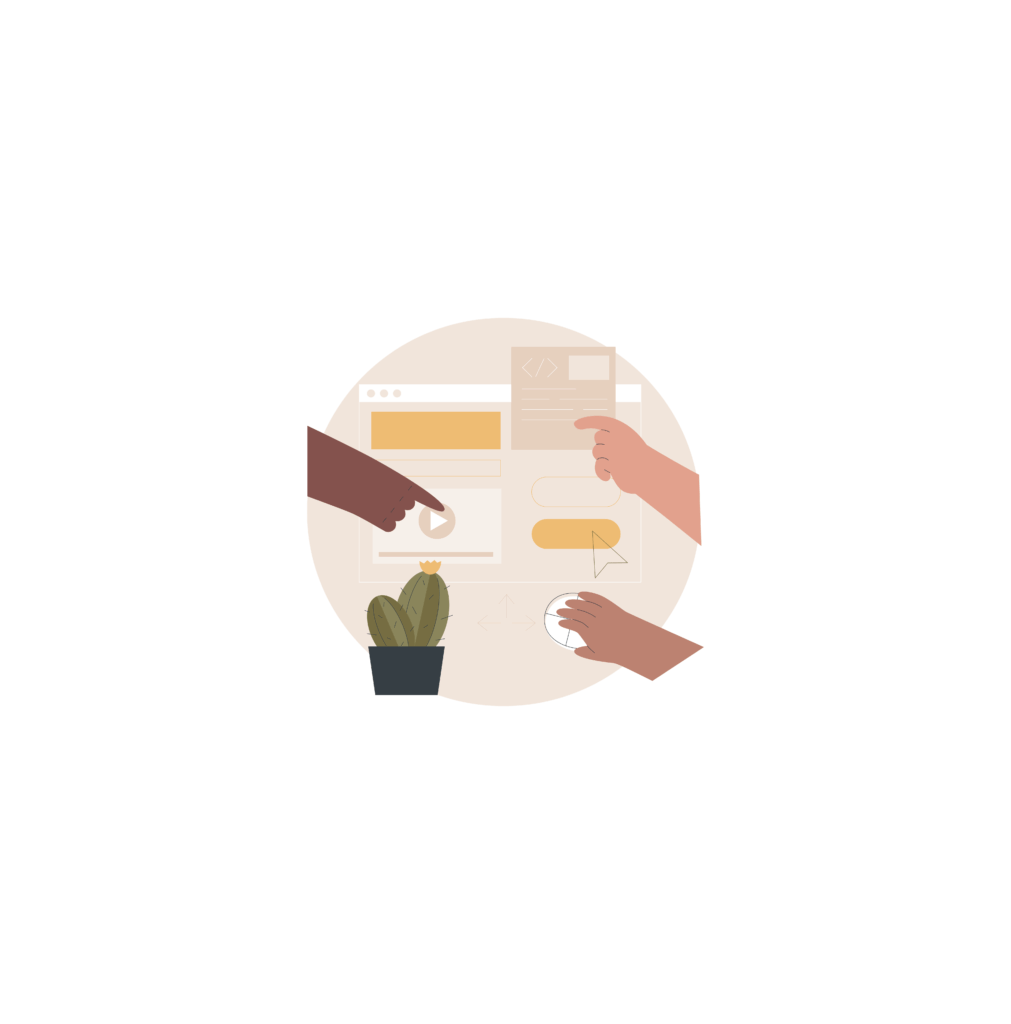Are you tired of using websites or apps that make your life difficult? Imagine using a platform that is intuitive, easy to navigate, and makes you feel good while using it. That’s the power of User Experience (UX) Design. UX design is about creating an enjoyable experience for users when they interact with your product or service. From understanding user needs to designing interfaces that are simple to use, UX design covers a wide range of skills and concepts.
In this blog post, we will take you through the fundamentals of UX Design – from the principles that govern it to the process involved in creating successful designs. We will also discuss how good UX design can contribute to business growth and kickstart your career in UX design. Read on for the ultimate user experience guide and become an expert in mastering UX Design!
Table of contents
- Understanding User Experience (UX) Design
- The Principles of UX Design
- The Process of UX Design
- Deliverables in UX Design
- How to Enhance User Experience?
- The Relationship between User Interface and User Experience
- How to Kickstart a Career in UX Design?
- How Can Good UX Design Contribute to Business Growth?
- Conclusion
- Frequently Asked Questions
Understanding User Experience (UX) Design
UX design focuses on creating a seamless marketplace for users, where their needs and preferences are met. Incorporating user research is essential to ensure that the designs are tailored to meet these needs effectively. A good UX design takes into consideration the overall experience and ease of use, aiming to make interactions with the product or service as smooth and enjoyable as possible. To achieve this, UX designers employ design thinking and best practices, constantly refining and improving the usability of their designs.
Visual design also plays a crucial role in enhancing the user interface (UI) and user experience (UX), making it aesthetically pleasing and engaging. By incorporating these principles and practices, UX designers create experiences that are optimized for real-life usage, minimizing any potential cons or frustrations.

Interaction Design in UX
Interaction design plays a vital role in defining how users engage with digital products. UI designers leverage layout and typography to create visually appealing interfaces that captivate users. The design process revolves around crafting intuitive and user-friendly interactions, ensuring a seamless user experience. Usability testing helps identify areas where interaction design can be improved, leading to enhanced user satisfaction.
Consistency in UI elements further elevates the overall user experience, making it easier for users to navigate and interact with the product. By incorporating these principles of interaction design, UX designers create engaging experiences that cater to users’ needs and desires, ultimately fostering positive user interactions and building brand loyalty.
The Role of Visual Design
Visual design plays a significant role in creating visually appealing interfaces that enhance the overall user experience. By utilizing colors, fonts, and graphics, designers can captivate users and leave a lasting impression. Tools like Adobe XD provide a platform for designers to bring their visual design ideas to life. The visual aspect contributes not only to the aesthetics but also to brand perception.
Users are more likely to engage with a product or service that has an appealing visual design. Aesthetically pleasing designs can positively impact user satisfaction, leading to increased engagement and loyalty. Incorporating visual design into UX ensures that the user’s journey is not only functional but also visually satisfying.
The Importance of User Research
User research plays a crucial role in UX design, allowing designers to gain a deep understanding of user needs and preferences. By gathering feedback through online surveys and customer satisfaction metrics, designers can gather valuable insights that drive the decision-making process.
Conducting user interviews provides even more valuable insights into user behavior, helping identify pain points and areas for improvement. User research is essential for creating user-centric designs that truly meet the needs of the target audience. By incorporating user research into the design process, designers can ensure their products are intuitive, user-friendly, and ultimately successful.
Grasping Information Architecture
Grasping the concept of information architecture is essential in creating a seamless user experience. By organizing and structuring content in a way that facilitates easy navigation, users can effortlessly find the information they need. Clear and logical hierarchies play a crucial role in improving the user’s ability to locate specific content.
Conducting card sorting exercises can help determine the ideal information architecture, ensuring it aligns with user expectations. Proper labeling and categorization further enhance the user’s understanding and comprehension of the content. Ultimately, information architecture serves as the foundation for delivering a smooth and intuitive user experience. By implementing effective information architecture, designers can create websites and applications that promote user satisfaction and engagement.
Here’s another article with in-depth insights on UX / UI Design, check it out to know more.
The Principles of UX Design
The principles of UX design serve as guiding lights, illuminating the path toward creating exceptional user experiences. Simplicity and clarity lie at the heart of this endeavor, ensuring that users can effortlessly navigate through interfaces and accomplish their goals. User-centered design is another key principle, placing the needs and desires of the users front and center. By understanding their motivations and aspirations, designers can craft experiences that resonate on a deep level.
Consistency plays a crucial role in UX design, harmonizing various design elements to create a cohesive and seamless experience across different touchpoints. Accessibility principles foster inclusivity, making sure that everyone, regardless of ability, can access and interact with digital products. Ultimately, the principles of UX design prioritize usability and aim to deliver the utmost user satisfaction.

The Process of UX Design
UX design involves understanding and addressing user pain points, challenges, and needs. To do this, creating user personas is essential, as it helps the design team gain insights into the target audience. User journeys are then mapped out to identify touchpoints where users interact with the product or service. This mapping allows for a deeper understanding of the user experience and provides opportunities for improvement.
The iterative design process is key in UX design, as it allows for continuous improvement based on user feedback. This process includes user research, prototyping, and testing to ensure that the final product meets user expectations and delivers a positive experience. By following this process, designers can create user-friendly interfaces and enhance the overall user experience.

Identifying User Pain Points
Identifying and addressing user pain points is a crucial aspect of creating a positive user experience. User pain points refer to areas where users encounter frustration or difficulty during their interaction with a product or service. Through user research, designers can gain insights into the challenges faced by users, allowing them to tailor their solutions accordingly. By actively seeking and resolving pain points, designers can greatly enhance the overall user experience.
User feedback and usability testing play significant roles in this process, helping to identify and address pain points effectively. By finding solutions to user pain points, designers can not only improve user satisfaction but also create products and services that truly meet the needs and expectations of their target audience.
Creating Effective User Personas
Creating effective user personas is a crucial step in user experience design. User personas represent target users and their characteristics, helping designers gain a deeper understanding of user needs and motivations. By guiding design decisions and prioritizing user goals, effective user personas ensure that designs meet user expectations.
Thorough user research and analysis serve as the foundation for creating impactful user personas. This research helps uncover valuable insights about users, enabling designers to empathize with their needs and pain points. By incorporating real-life data and experiences into user personas, designers can create more relatable and relevant designs. User personas not only enhance the overall user experience but also contribute to the success of the design process.
Mapping User Journeys
Mapping user journeys is an essential aspect of understanding the user experience. By visualizing the steps users take to achieve their goals, designers can identify pain points and areas for improvement. User journey maps provide valuable insights into user behavior and decision-making, allowing for a more effective optimization of the overall user experience.
Aligning design decisions with user needs and goals becomes easier when we have a clear understanding of their journey. Through user journey mapping, designers can empathize with users and create experiences that meet their expectations. By optimizing user journeys, we can ensure that users have a seamless and enjoyable experience throughout their interaction with a product or service.
The Art of Wireframing
Wireframing is an essential and creative process in the field of user experience design. It plays a crucial role in visualizing the structure and layout of a website or app. When creating wireframes, designers take into consideration the user’s needs and goals to ensure a seamless user experience. These wireframes provide a strong foundation for the overall design and development process.
One of the key benefits of effective wireframing is clear communication between designers and developers. By providing a visual representation of the interface and interaction elements, wireframes facilitate collaboration and understanding among team members. This helps in avoiding misunderstandings, saving time, and ensuring that the final product meets the desired user experience.
Wireframing is like laying down the blueprint of a building before it’s constructed. It is an essential step in the UX design process and sets the stage for creating user-centric interfaces. By focusing on wireframing, designers can create intuitive and visually appealing designs that meet user expectations.
Prototyping for Success
Prototyping plays a vital role in UX design, allowing designers to craft interactive and realistic representations of their designs. This process facilitates the gathering of valuable feedback and validation of design decisions. By embracing iterative prototyping, designers can enhance the usability and functionality of digital products continuously.
Various tools and techniques can be utilized to create prototypes, enabling designers to choose the most suitable approach for their projects. User testing with prototypes is instrumental in identifying and resolving issues early in the design process, ensuring a smoother user experience. By incorporating prototyping into the design workflow, designers can increase the chances of success by creating user-centered and optimized designs.
Check out an article on Full Stack Developer vs. Front End Developer vs. Back End Developer.
Deliverables in UX Design
In the world of user experience design, various deliverables play a crucial role in ensuring the success of a project. These deliverables, including wireframes, prototypes, and user personas, are essential tools that help designers create intuitive and user-friendly products. Design specifications document the visual and interaction design elements, providing a guide for developers to bring the design to life.
Usability reports provide valuable insights from user testing and evaluation, helping teams identify areas for improvement. Style guides ensure consistency in visual design across the product, enhancing the overall user experience. It’s important to note that deliverables may vary depending on the specific project requirements and client needs. By utilizing these deliverables effectively, UX designers can create exceptional experiences for users.
Conducting User Research
Conducting user research is a crucial step in mastering user experience design. It involves gathering insights about the target audience to understand their needs and preferences. Methods like interviews and surveys are used to gather valuable data that informs design decisions and enhances the overall user experience. Through data analysis, patterns and trends in user behavior can be uncovered, allowing designers to create more tailored and effective solutions.
It’s important to note that user research should be an ongoing process throughout the design lifecycle, ensuring that the product evolves and meets the changing needs of the users. By conducting thorough user research, designers can create products that truly meet the expectations and demands of their target audience.
Performing Competitor Assessment
Performing a competitor assessment is an essential step in the UX design process. By analyzing the strengths and weaknesses of competing products, we can understand what sets our design solution apart. This helps us identify gaps in the market and create a unique and differentiated user experience.
Additionally, studying competitor strategies can inspire us to take innovative design approaches and stay ahead in the industry. Competitive analysis also plays a crucial role in informing decision-making throughout the UX design process. By continuously monitoring our competitors, we can ensure that we are always one step ahead, delivering the best user experience possible. Utilizing these insights from a competitor assessment helps us create designs that truly stand out in the market.
Exploring Interaction Design
Exploring Interaction Design is a crucial aspect of creating a positive user experience. By focusing on creating meaningful and intuitive user interactions, designers can enhance the usability of digital products. Applying design principles ensures that the interaction design meets the needs and expectations of users. User flows and navigation design plays a key role in facilitating seamless user journeys, guiding users through the product effortlessly.
Interactive prototypes provide a visual representation for testing and iterating different interaction patterns, refining the design to perfection. With a strong emphasis on the user’s mental model and expectations, interaction design aims to create a satisfying and delightful user experience. By considering these factors, designers can create digital products that truly engage and delight users.
Structuring Information Architecture
Structuring information architecture is a crucial aspect of user experience design. It involves organizing and structuring content in a way that facilitates easy navigation for users. By employing hierarchical structures and categorization, information can be presented in a logical manner, allowing users to find what they need quickly.
One effective technique to define the optimal information architecture is card sorting, which helps determine how users naturally group and categorize information. To enhance the user experience, clear labeling and intuitive navigation are essential. It’s important to ensure that the information architecture aligns with the goals and needs of the users. By prioritizing user-centric organization and navigation, a well-structured information architecture can greatly contribute to a positive user experience.
An article on UX Design Strategies That Work: Boost Ecommerce Conversion might be of interest to you.
How to Enhance User Experience?
Enhancing user experience in UX design involves applying Fitt’s Law. This principle states that the time to reach a target depends on its size and distance. By designing larger and closer targets, you can improve user efficiency and satisfaction. Consider Fitt’s Law when creating interfaces for a better user experience.

Applying Fitt’s Law in UX Design
Understanding Fitt’s Law and its application in UX design is crucial for creating a seamless user experience. By designing user interfaces that are easily accessible and intuitive, we can enhance the overall usability of a product or website. When it comes to applying Fitt’s Law in UX design, there are a few key tips to keep in mind. First, consider the size and placement of interactive elements such as buttons, links, and menus. By making these elements larger and closer to the user, we can improve efficiency and user satisfaction.
Additionally, it’s important to test and measure the effectiveness of Fitt’s Law in improving user experience. By studying case studies showcasing successful implementation, we can gain valuable insights and refine our design practices. Overall, Fitt’s Law is a powerful tool in UX design that can greatly enhance the usability and accessibility of digital products.
Tools for UX Design
When it comes to UX design, having the right tools can make a significant difference in creating exceptional user experiences. Several popular design tools can aid in the process. One such tool is Sketch, which is widely used for its ability to create wireframes and prototypes. Another powerful tool is Adobe XD, which enables designers to create interactive user experiences. InVision is another platform that allows designers to create prototypes and gather valuable feedback from users.
For collaborative design work, Figma is an excellent choice, as it enables teams to work together on interfaces and prototypes. Lastly, Canva is a simple yet effective tool for creating graphics and visual content to enhance the overall user experience. By leveraging these tools, designers can streamline their workflow and create intuitive and engaging designs that truly resonate with users.
The Relationship between User Interface and User Experience
Understanding the connection between user interface (UI) and user experience (UX) is crucial for creating seamless marketplaces. By designing guides that focus on UX for beginners, a strong foundation can be established. Incorporating UX principles in the design process ensures that user research and usability testing are prioritized, leading to better outcomes. Good UX design takes into consideration the overall experience, including layout, typography, and visual design.
Effective UI design enhances user satisfaction and the ease of use of digital products. By combining the two, the overall user experience can be optimized, resulting in increased user engagement and loyalty. When UI and UX work harmoniously, it creates a positive impact on both users and businesses.
Here’s an article on How Design Thinking Can Help Prevent Data Loss.

How to Kickstart a Career in UX Design?
Mastering UX design requires learning key principles and best practices. Gather insights on user needs through online surveys and customer satisfaction metrics. Showcase your skills with a strong portfolio. Collaborate with UI designers and stakeholders to integrate different perspectives. Enhance employability by developing proficiency in industry-standard tools like Adobe and Google.
Building Your UX Design Portfolio
Building an impressive UX design portfolio is crucial for showcasing your skills and expertise in the field. You can demonstrate hands-on experience and practical application of user experience design by including real-life projects. Case studies highlighting the design process and showcasing the key differences made can add credibility to your portfolio.
Additionally, presenting the results of usability testing and the subsequent improvements made validates your design decisions. To enhance the aesthetics of your portfolio, consider incorporating visual design elements such as fonts and layouts. Including client testimonials and feedback provides social proof of your skills and client satisfaction. By focusing on these elements, you can create a compelling UX design portfolio that stands out from the crowd.
How Can Good UX Design Contribute to Business Growth?
Good UX design plays a crucial role in business growth. It attracts and retains customers, leading to increased satisfaction. Positive word-of-mouth generates organic growth and customer referrals. Seamless user experiences result in higher conversion rates and sales. Prioritizing user research and feedback drives continuous improvement. Investing in UX positions businesses as customer-centric, enhancing brand loyalty.
Conclusion
In conclusion, mastering UX design is essential for creating a seamless and enjoyable user experience. By understanding the principles of UX design and following a structured process, you can identify user pain points, create effective personas, map user journeys, and design wireframes and prototypes that meet user needs. Conducting user research, performing competitor assessments, and exploring interaction design and information architecture are all crucial steps in delivering high-quality UX design. By applying Fitt’s Law and utilizing the right tools, you can enhance the user experience even further.
If you’re looking to kickstart a career in UX design, focus on building your portfolio and showcasing your skills. And remember, good UX design not only improves user satisfaction but also contributes to business growth. Share this guide on social media to help others master the art of UX design! Additionally, if you want help with designing or custom software development for your business, be sure to check out our company’s portfolio, our experts are more than willing to provide you consultation.
Frequently Asked Questions
What are some common elements of good UX design?
Some common elements of good UX design include prioritizing user needs and preferences, ensuring clear and intuitive navigation, maintaining consistency in design elements, and ensuring accessibility for all users. These elements contribute to creating a positive user experience.
How can a business improve its website’s UX to increase customer satisfaction?
To enhance customer satisfaction, businesses can improve their website’s user experience (UX) by conducting user research, simplifying navigation, ensuring fast loading times, and continuously testing and iterating to improve the overall UX.
Are there any tools or software available to help with UX design?
Yes, various tools and software options can assist with UX design. Popular choices include Figma, Sketch, Adobe XD, and InVision. These tools offer features for wireframing, prototyping, and user testing. It’s crucial to select the right tool based on your specific needs and budget.



